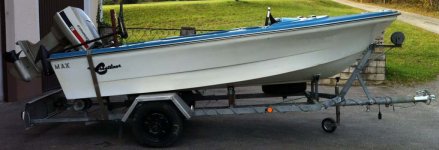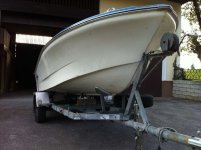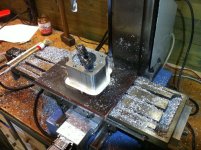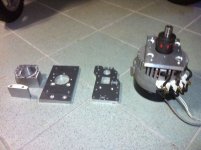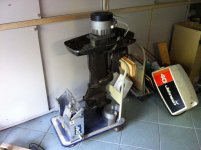tef
1 W
Hi,
###
edit: I changed the plan and will convert an old outboard motor to electric. I replaced the combustion engine with a ME0913 motor.
###
I think about building two (separate) electric outboard motors for my future fishing boat (details: http://www.hiroshajo.hu/english/model/kmaxixtra.html) to get faster to the spots than with the trolling motor and inflatable boat I'm using now.
I would use the follwing components:
Motors: 80100 outrunner, will rewind them for 70kv and install halls
Controllers: 24 x 4115 fets sensored infineon
Gearing: Neugart WPLE 60 (1:5) gearboxes (underwater)
Battery: 30s A123 (100V, 12kwh)
Props: maybe the props which are installed on the torqeedo cruise 4.0 models. Designed for about 20km/h with 1300rpm.
I expect 3-4 kw continous from each motor (with water cooling of the mounting plate) and hope that the boat will reach planing speed.
What do you think, is planing realistic or should I focus on the max. hull speed?
tef
###
edit: I changed the plan and will convert an old outboard motor to electric. I replaced the combustion engine with a ME0913 motor.
###
I think about building two (separate) electric outboard motors for my future fishing boat (details: http://www.hiroshajo.hu/english/model/kmaxixtra.html) to get faster to the spots than with the trolling motor and inflatable boat I'm using now.
I would use the follwing components:
Motors: 80100 outrunner, will rewind them for 70kv and install halls
Controllers: 24 x 4115 fets sensored infineon
Gearing: Neugart WPLE 60 (1:5) gearboxes (underwater)
Battery: 30s A123 (100V, 12kwh)
Props: maybe the props which are installed on the torqeedo cruise 4.0 models. Designed for about 20km/h with 1300rpm.
I expect 3-4 kw continous from each motor (with water cooling of the mounting plate) and hope that the boat will reach planing speed.
What do you think, is planing realistic or should I focus on the max. hull speed?
tef


